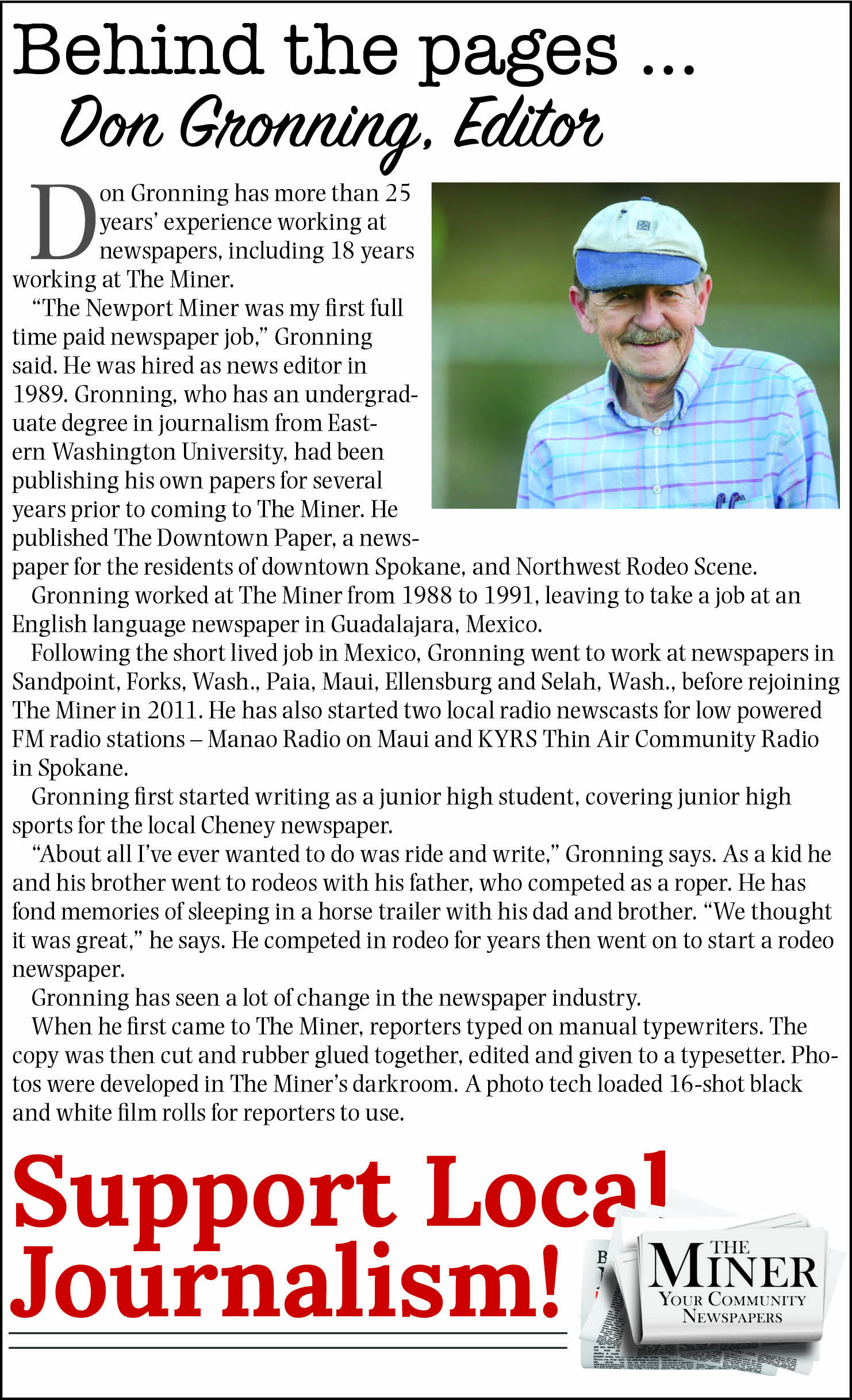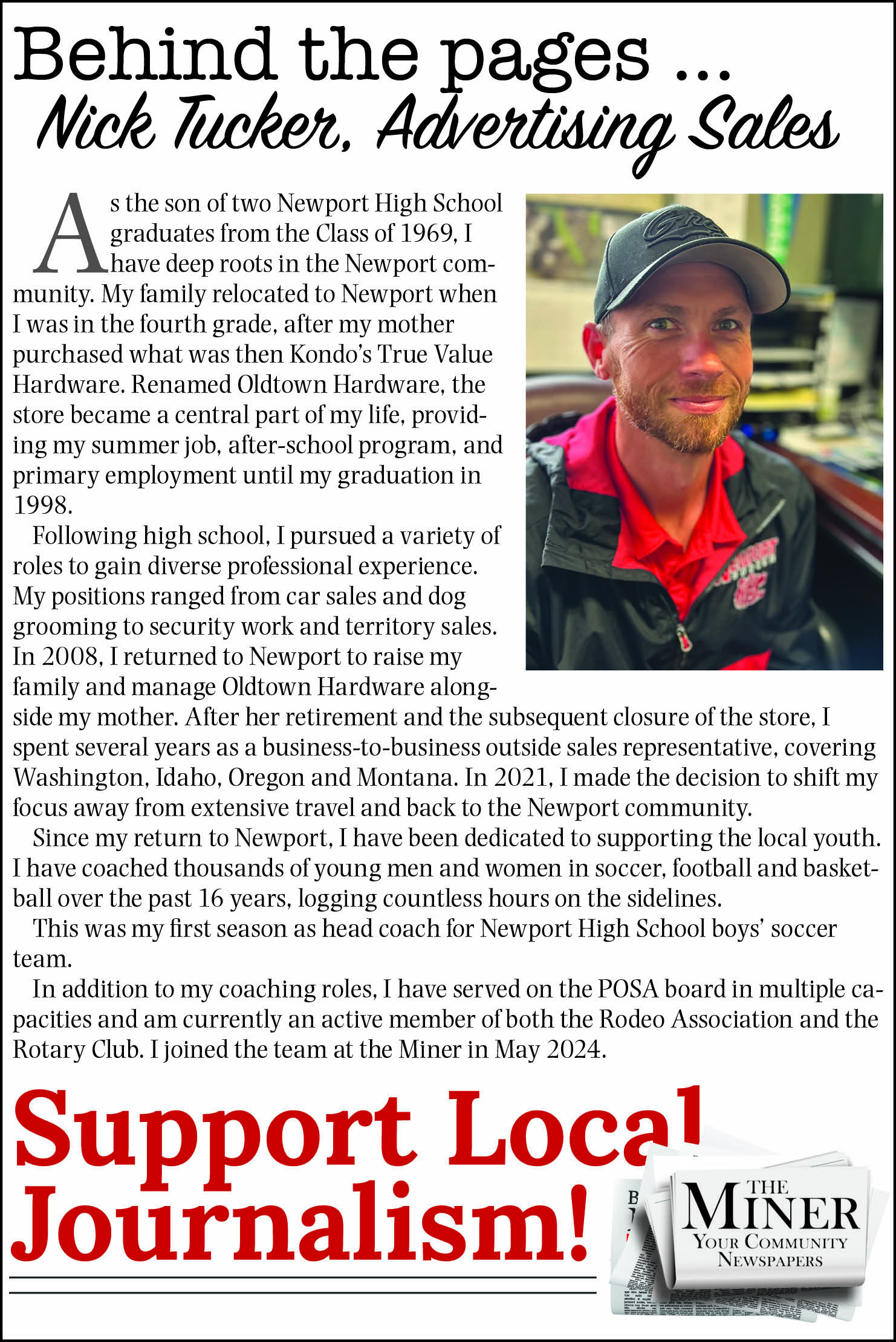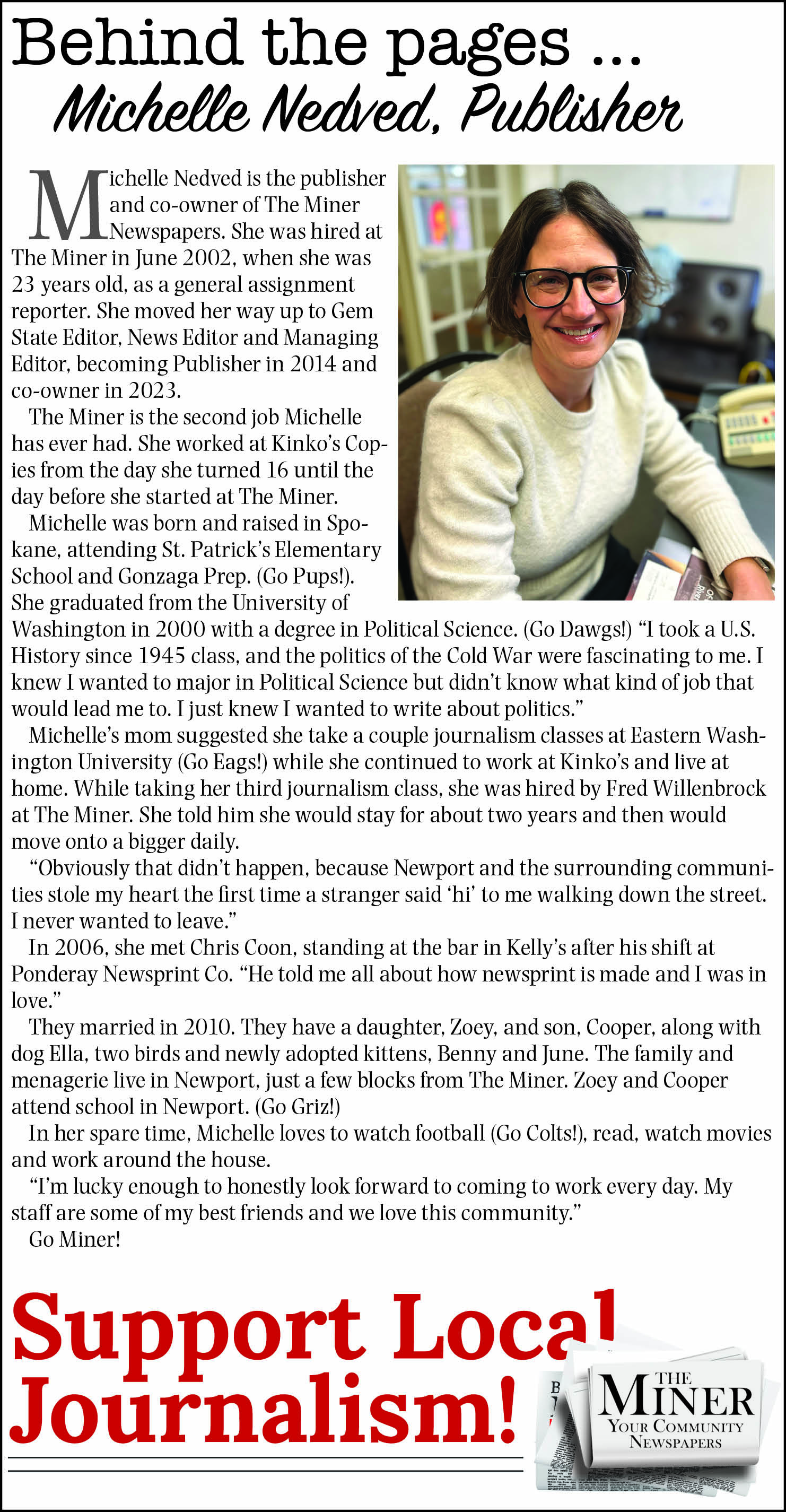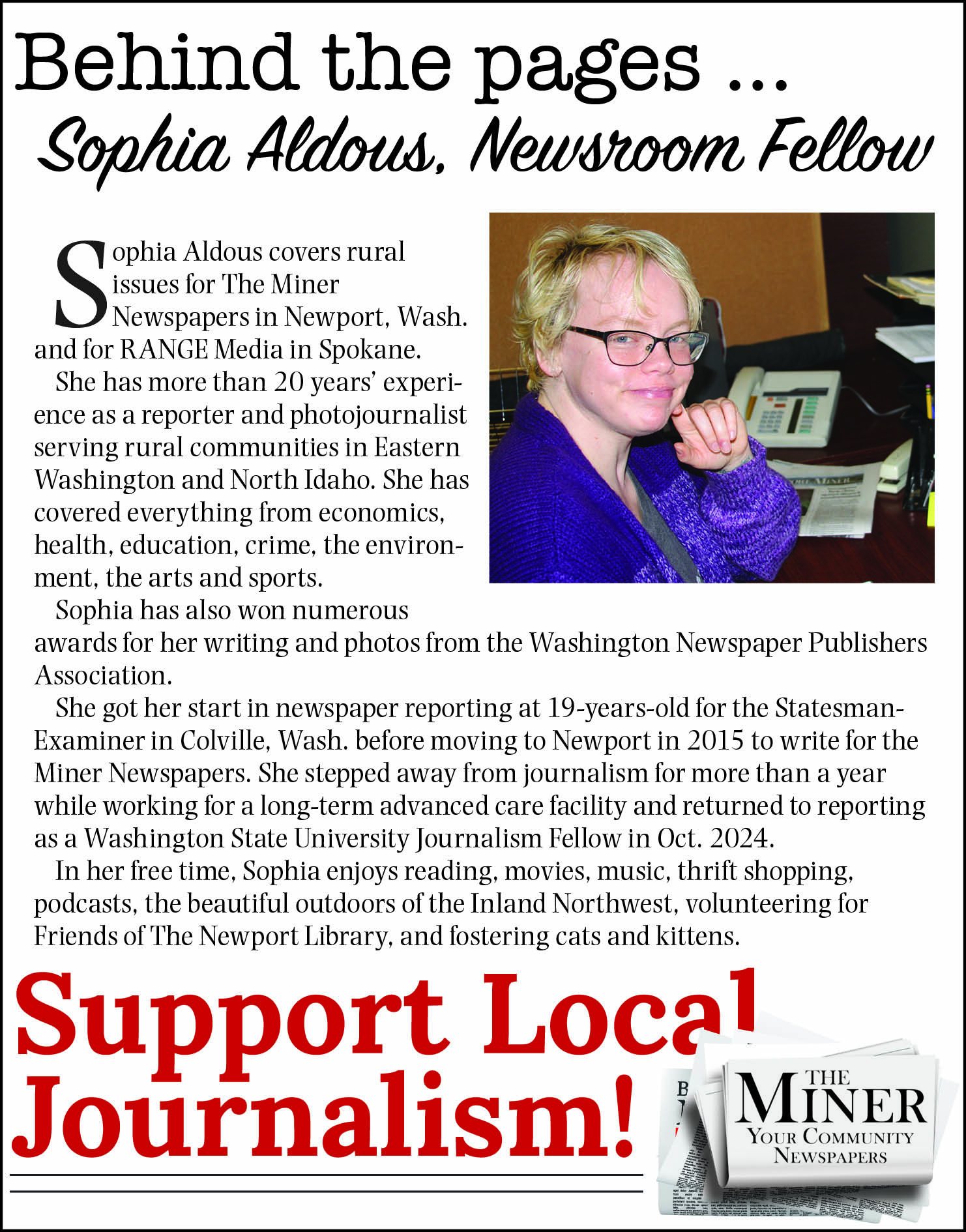NEWPORT – Pend Oreille Public Utility District General Manager John Janney said that the utility has to look at the long-term picture to be prepared for a variety of upcoming things.
“We’ve got several things happening over the next 10 years,” Janney said. “The current deal we have with Shell Energy expires at the end of 2025. The Clark PUD sale kicks in January 2026, our Boundary settlement agreement with Seattle expires at the end of 2029. Then we’ve some regulatory things that are kicking in over the next 10 years as well.”
He said the board needs a multi-year look to make decisions.
The PUD is in the midst of several decade- long planning projects.
“For the first time we are required to submit a wildfire mitigation plan to the Department of Natural resources.” Janney said that the PUD is looking at its risks. The plan is due the end of October.
He said that PUD lines currently are set to shut off electricity when something like a bird hits the lines. They are set to turn back on if the disturbance that set them off doesn’t occur again. In high fire season, that will likely need to change, Janney said. The line won’t quickly turn back on.
“The challenge with that, especially in high wildfire season, is that you have to go inspect the whole line before you turn it back on,” he said. That can mean physically inspecting with people, it can be done with drones and other cameras or a combination of things. Even if there were no fires, Janney said people should expect to see more frequent and longer outages.
“That’s just the world we’re going to have to live in, with the liability for wildfire,” he said.
Janney said the PUD was quite aways from preemptive shutoffs, where sections would be disconnected because of the fear of wildfire.
He said that medical equipment and wells were two things that had to be looked at before a preemptive shutoff. People with medical equipment that runs on electricity and homeowner with wells, need the electricity.
“Over the next year or two, we’ll be able to have a much better idea on that,” he said. He said the PUD would know when the danger of shutting power off compared to the small risk that the PUD equipment will start a wildfire.
“We could be darned if we do and darned if we don’t,” he said. “We could really harm somebody if we shut it off preemptively. We just need to know what that looks like before we can make the call.”
Janney said that putting lines underground is something some customers do.
“A lot of times the customer just doesn’t want the sight of overhead lines,” he said. He said the underground lines are more expensive. The board hasn’t made any decisions about underground lines.
The cost of the wild- fire mitigation plans isn’t known right now.
“It won’t be free,” Janney said. He said he wanted to be able to look people in the eye and know the PUD did all that could reasonably be done to prevent wildfire.
Other long range studies include a workforce and compensation study. The PUD has about 80 employees.
“We downsized quite a bit a few years ago and really haven’t added back,” Janney said. “Part of our effort on this workforce plan is looking out for the next 10 years, trying to anticipate everything that is coming at us and making sure we have the right people in the right jobs with the right training.”
Like most of the rest of the country, the PUD is dealing with an aging workforce, with retirements on the horizon.
Janney says because the PUD is small, it doesn’t necessarily have the people to draw from to fill retirements. Since many of the jobs don’t have backups, a person might have to be hired six months before a worker retires to make sure the replacement has all the knowledge needed.
He said the board needs to stay informed of what costs are going to be for workers.
Janney said that even though the PUD is small, the complexity of the business rivals larger utilities.
He said the PUD has a large Federal Energy Regulatory Commission regulated hydro project on the Pend Oreille River, power contracts with Seattle City Light on Boundary Dam and BPA. The PUD has to buy and sell power in the market to balance electric loads in the region. The PUD has a wholesale telecommunications arm with the fiber business and the district manages nine water systems. All these things come with regulations.
“We work in one of the most highly regulated industries anywhere,” he said. Skilled workers are needed to make sure the PUD is complying with the regulations, let alone making the utilities run.
Like most managers, he is dealing with staffing.
“If we’re not careful and we lose our best people, it can be hard to attract somebody back that wants to come live here and work here,” he said. He said paying staff enough so that they don’t leave is important, but it is also important to have conditions that attract people.
“We want to be competitive in the marketplace, not just for salaries, but for flexible work schedules and benefits,” he said.
He said moving to a four-day workweek was in keeping with that. He says with employees cooperating with each other, it has been working.
“I’ve had really good feedback,” he said. He said that he hasn’t heard complaints from customers. “Since we’ve been on it, I’ve personally heard zero complaints.”
PUD has cash
NEWPORT – The PUD has more than $100 million in cash that is earning far more interest than it did just two years ago.
In 2022, Pend Oreille PUD received $837,464 in interest. In 2023, the PUD received $3.59 million and is projected to receive $3.65 million for 2024.
Since the PUD has cash and minimal debt, it benefits from rising interest rates. The numbers were reported during the PUD’s regular meeting Tuesday, Sept. 3.
.png)













